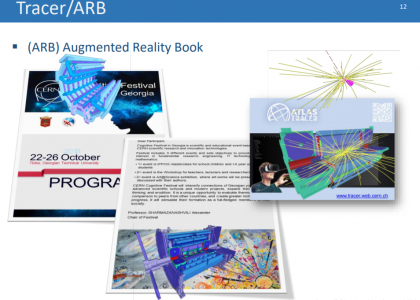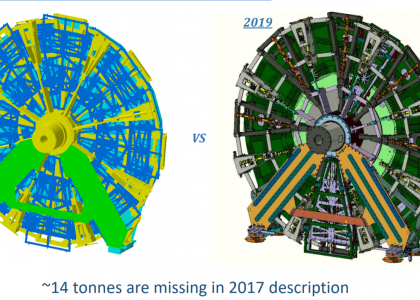Nuclear Engineering Center Welcomes Shota Tevdorashvili as a Full-Time Software Developer
The Nuclear Engineering Center (NEC) is pleased to announce that Shota Tevdorashvili, who joined us

18 April, 2010, CERN. Paper Reported for Presentation: Update on Geometry in Barrel-Endcap Gap Region. Release 4 Authors: Sharmazanashvili Alexander, Surmava Archil, Kekelia Besik Indico Link Presentation.pdf
06 April, 2010, CERN. Paper Reported for Presentation: CATIA Information for Barrel‐ Endcap Region Authors: Sharmazanashvili Alexander Indico Link Presentation.pdf
23 March, 2010, CERN. Paper Reported for Presentation: Consideration of ATLAS 3D CATIA Geometry for Geant4 Entities Authors: Sharmazanashvili Alexander, Kverenchkhiladze Irakli, Surmava Archil, Kekelia Besik Indico Link Presentation.pdf
9 March, 2020, Vidyo/on-line. Paper Reported for Presentation: CppCheck and Coverity Authors: Sharmazanashvili Alexander, Todua Luka, Pirtskhalava Mariam Indico Link
05 March, 2020, Vidyo/on-line. Paper Reported for Presentation: CppCheck and Coverity Authors: Sharmazanashvili Alexander, Todua Luka, Pirtskhalava Mariam Indico Link Presentation.pdf

Our project manager Alexander Sharmazanashvili presented at ASCIG meeting where he talked about JIRA notification schemes and discussed authot\’s feedback about getting e-mails of every ticket. Alexander presented all the JIRA Ticket notification scheme and discussed them with ATLAS SOFTWARE

Our project manager Alexander Sharmazanashvili presented at ATLAS Week Outreach Parallel Session on 26th february, 2020. Main topic of the presentation was to inform ATLAS outreach about new TRACER based applications and their concepts. Alexander started presentation with speaking about

Our project manager Alexander Sharmazanashvili presented at monthly meeting about Detector Description and gave detailed description about New Small Wheel Detector. Alexander described current Working Packages and progresses and described all the differences between 2017 presentation about New Small Wheel
18 February, 2020, Vidyo/on-line. Paper Reported for Presentation: New Small Wheel Detector Description Authors: Sharmazanashvili Alexander, Tsutskiridze Niko Indico Link Presentation.pdf
14 Feb, 2020, Vidyo/on-line. Paper Reported for Presentation: VISUALISATION OF TILECAL BY WEBGL API Authors: Sharmazanashvili Alexander, Phataridze Lasha, Khelashvili Levan, Udzilauri Nikoloz, Kobakhidze Shota Indico Link Presentation.pdf